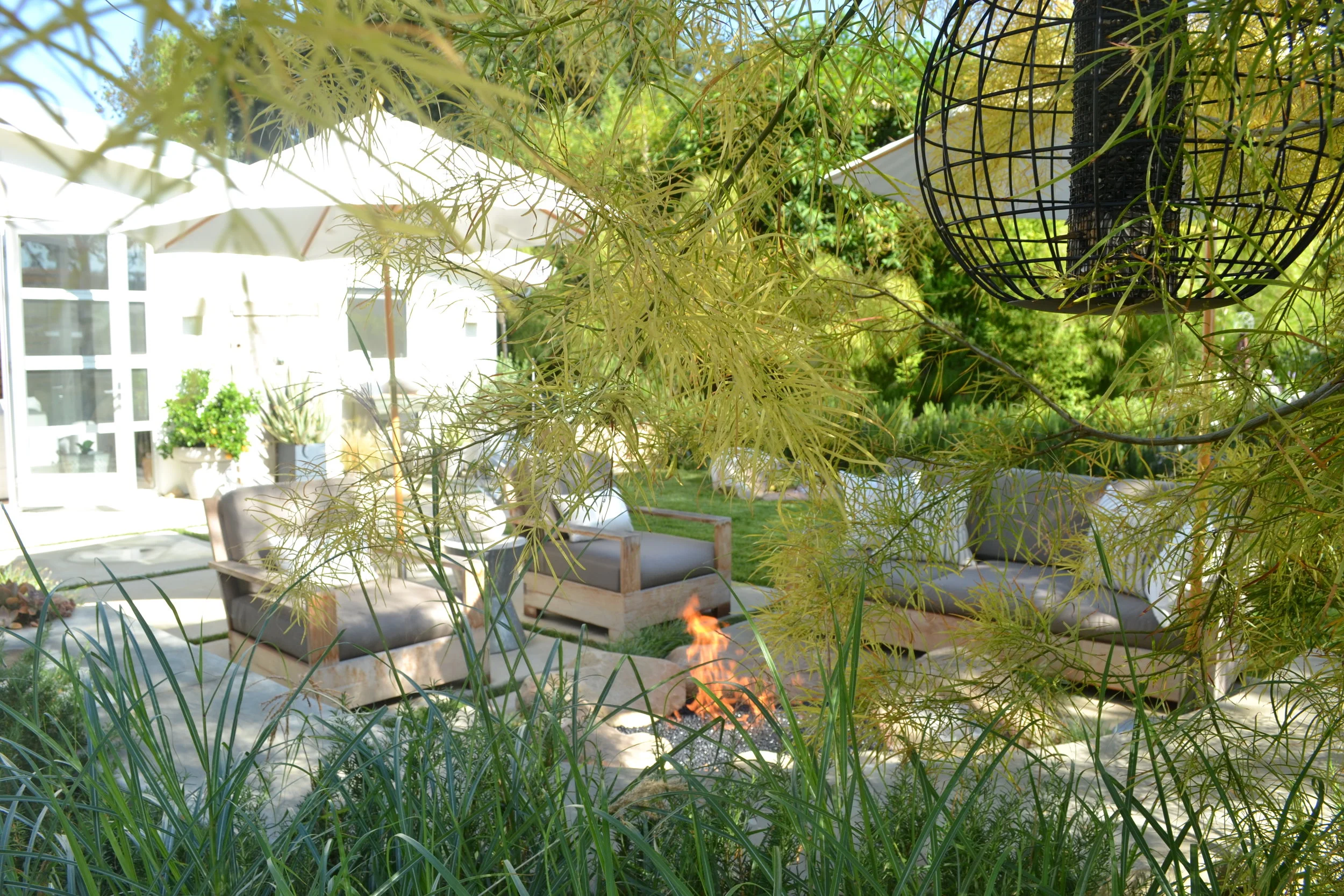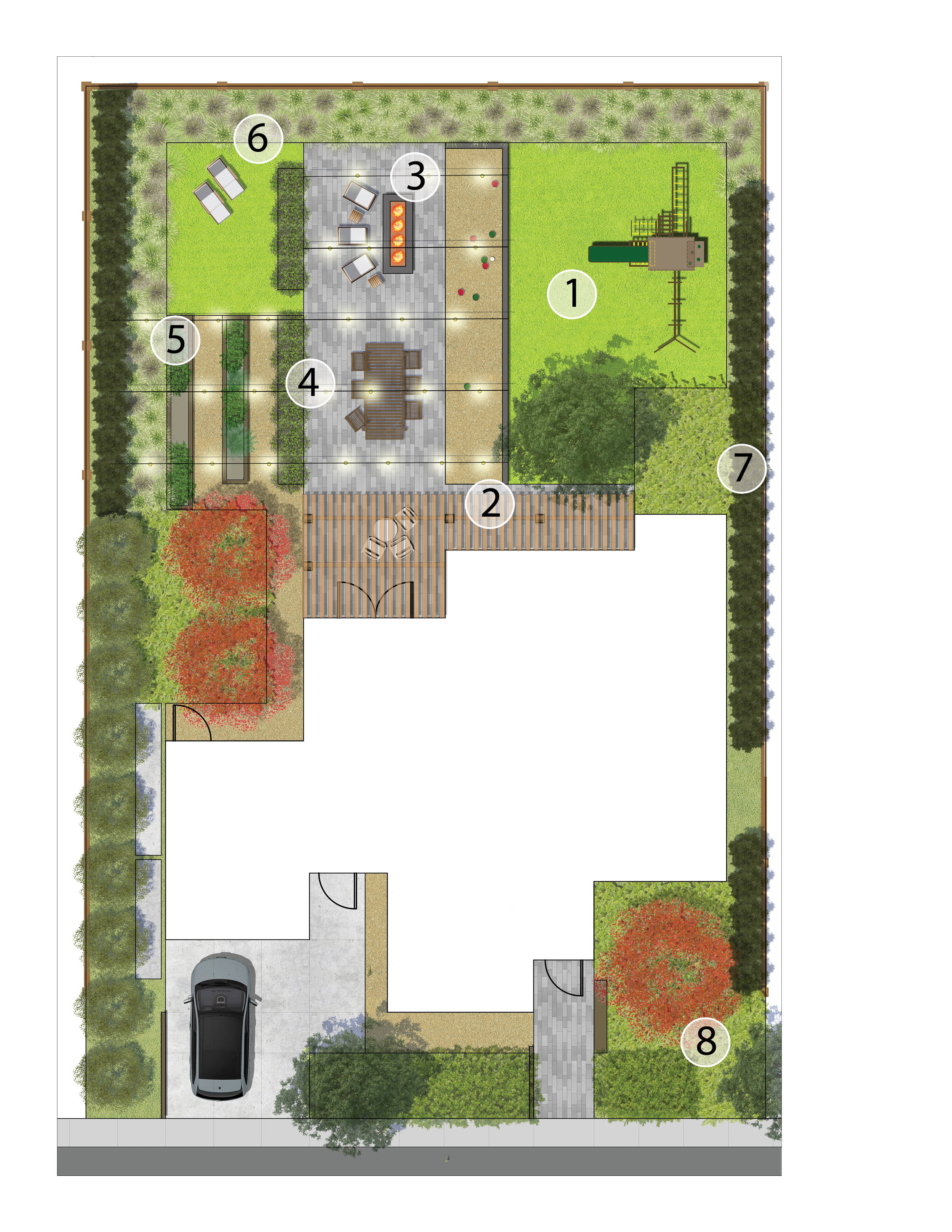Nothing can enlarge you home and living space more quickly and simply than a paved patio. The area becomes another room that extends living space beyond your walls, effectively increasing the livable square footage of your property.
When you’re choosing the materials for the paving, think simple. Avoid using too many textures and colors in one space. Whether your home is formal or rustic, adjacent paving should harmonize with the architecture to connect structure and site.
Your choice may also be limited by what’s available locally. Most paving materials are heavy, and costs grow quickly as the distance from the source of supply increases. Decide early whether to do your own paving or to have it done by a professional. Some materials are easy to install; others require heavy equipment and professional skills.
Whatever paving material you decide be sure to account for adequate drainage. Any time you pave an area you interfere with the natural percolation of water into the ground. You’ll need to pitch the paving surface slightly, directing runoff toward natural drainage or installed drains.
The following descriptions of various paving materials, along with your Think Outside Designer are intended to help you choose the paving that is right for your project.
Poured Concrete.
This versatile material can be poured in any shape, can cover broad expanses, and can be finished in smooth, rough, or pebbled finishes. Used with imagination concrete can be elegant and refined, but ultimate appearance depends largely on proper design, planning, and quality of the installation.
The durability of properly installed concrete is unquestioned. Site preparation (grading the earth, rebar, and building forms) can be time-consuming, but the actual pouring and finishing often go quickly. You may be able to prepare the site yourself, then let the professional take over. A professional can also etch and finish concrete to resemble stone, tile, or brick. Your Think Outside Designer will work with you to develop a pattern that compliments your style and home.
Concrete Pavers.
Standard concrete pavers are square, rounds, or rectangular, and come in a variety of colors and finishes to match any aesthetic. Exposed aggregate surfaces are available with many different special stone of glass mixtures. Pavers are easy to use, suitable for projects completed in phases, and are relatively inexpensive. You can lay them in mortar over concrete or on a sand bed, depending on your use requirements. Standard pavers offer many pattern possibilities; interlocking pavers have unique patterns, require no mortar, and are self-aligning.
Brick Paving.
Brick works well in both formal and rustic settings. Bricks are easy to work with, just rough enough for good traction, and com in a variety of colors, textures, and sizes. Most brick, though, is relatively expensive compared to other materials.
You can also mortar bricks over concrete or set them on sand beds. Work with your Think Outside Designer to develop a pattern that suites your taste and site.
Stone.
Stone paving over the warmth of a thoroughly natural material, and the most durable. Disadvantages include the high cost, the weight of material, and a surface that may be slick when wet if an appropriate finish is not selected.
Flagstone and slate are both sedimentary rocks that split naturally into irregular shaped flat slaps that are ideal for paving. Thick stones can be laid in sand over compacted aggregate. You can fit them together in an irregular pattern, usually with minimal cutting, or you can purchase stones with uniform shapes for a more formal appearance.
Tile Paving.
Exterior tile, either terracotta, stone, wood-look or the high-fired type, combine earth good looks with durability. Tile is as easy to lay as brick, and can be set either in sand or mortared over concrete, depending on thickness and use. Tile is more difficult to cut than brick, though, so it’s best to design your paving to accommodate full size tiles. Tile can be slippery when wet so be sure to select a tile that has a slip coefficient rated for outdoor use.
Gravel Paving.
With few exceptions paving of rock and gravel are less suited for outdoor living areas than they are for pathways or areas that can function as a type of ground cover. Low cost and easy install are strong points. Gravel paving provides a clean and often an informal look that is well suited for fire pit circles, informal pathways, and Zen gardens. Gravel surfaces need sweeping because stones tend to “travel” when walked on; this can be minimized by using a gravel paving cell which our designers can help specify.







